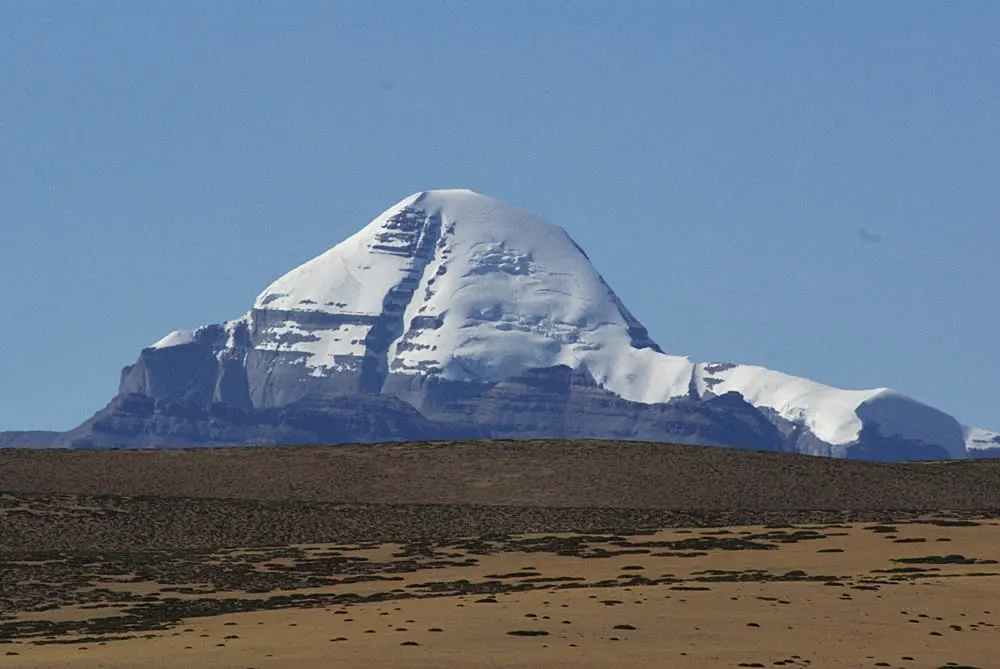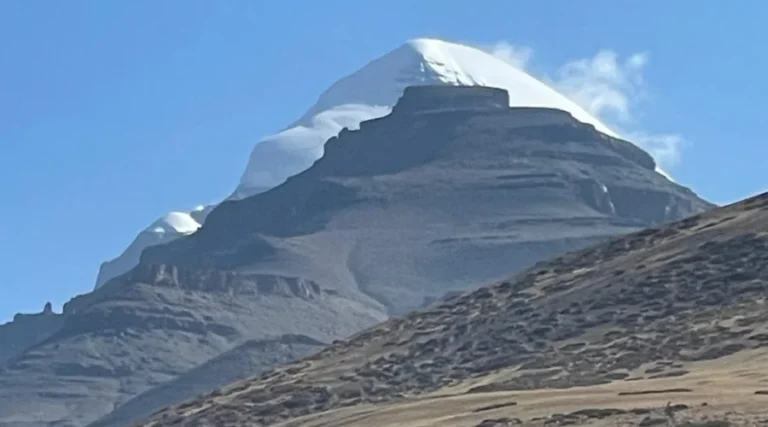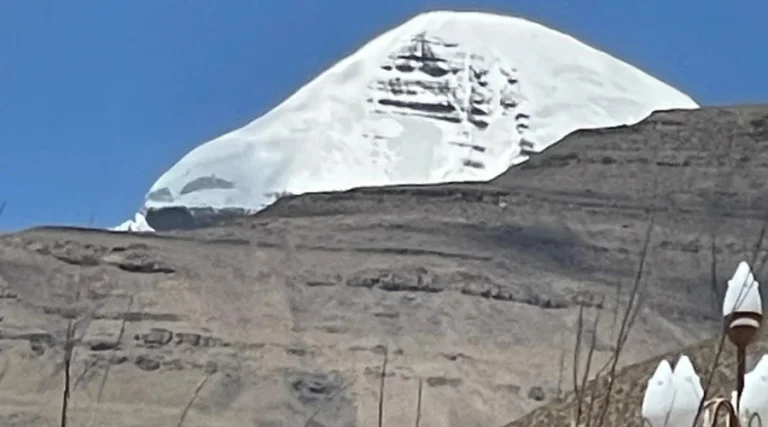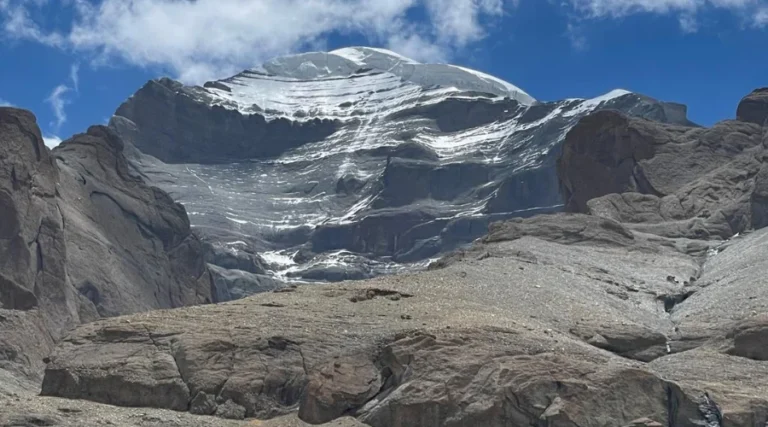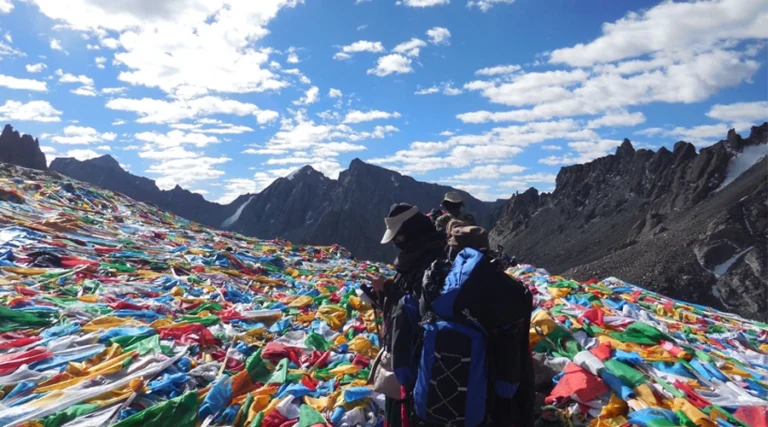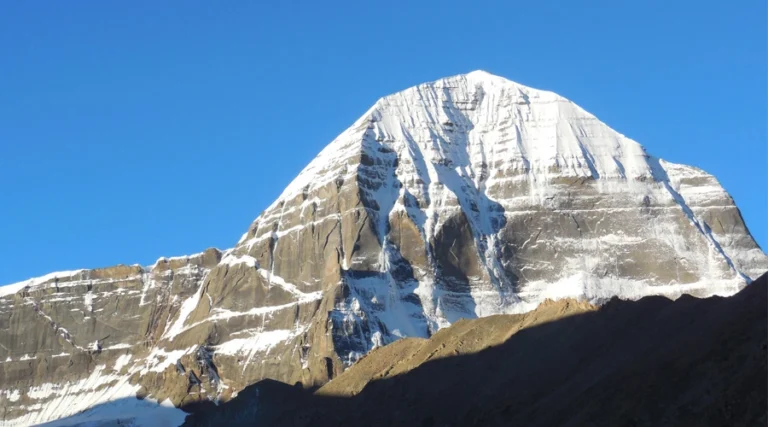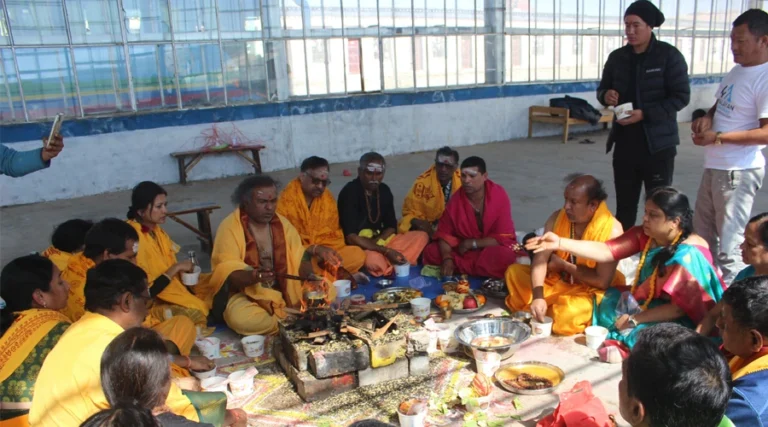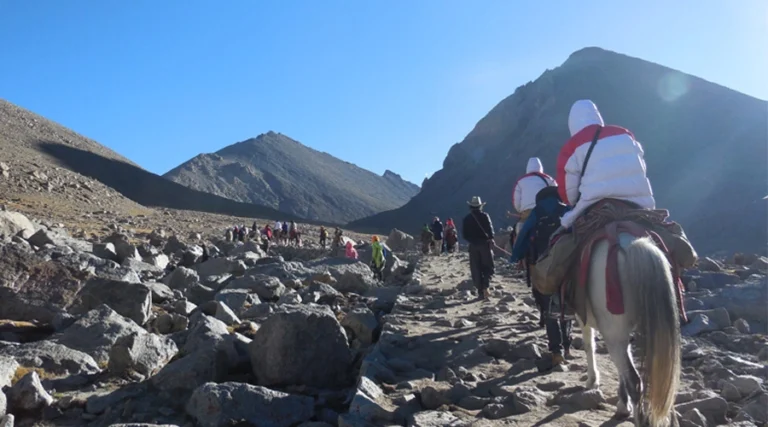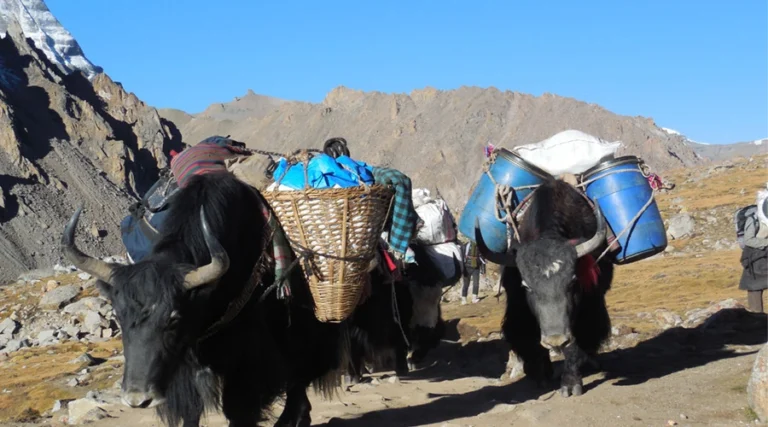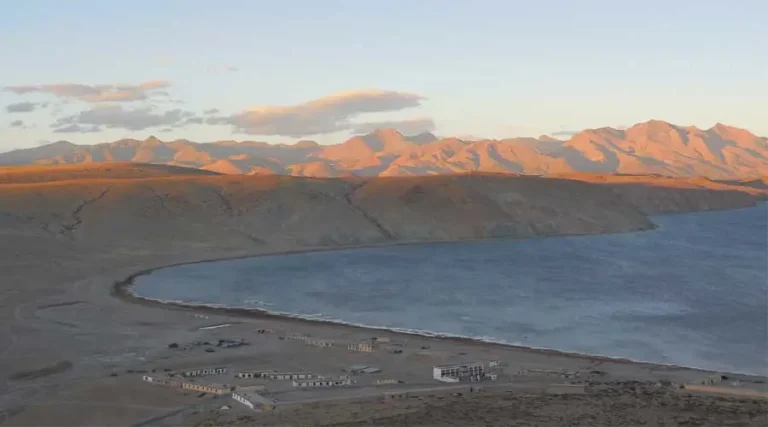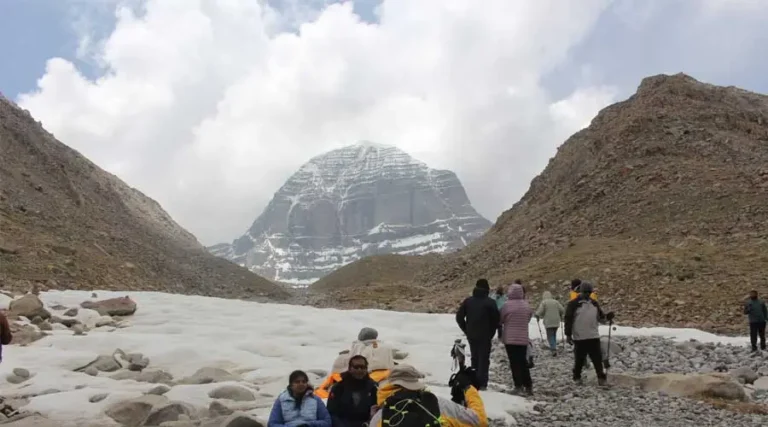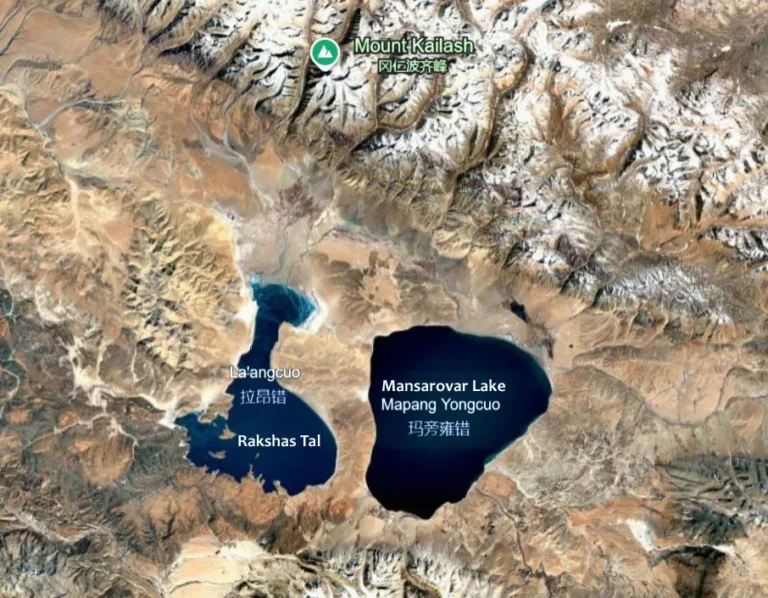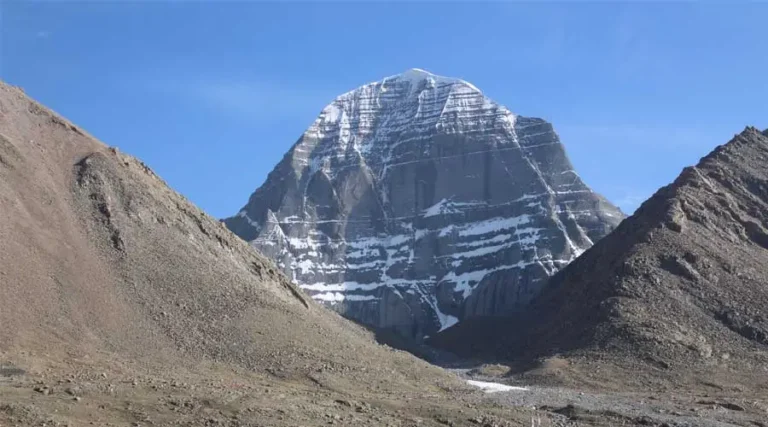Kailash Mansarovar Yatra
-

Trip Duration 12 Days
-

Max, Altitude 5650 Meters
-

Type Standard
-

Best Season April to Sept
-

Meals Included
-

Accommodation Guest house
-

Activity Pilgrimage Tour
-

Difficulty Strenuous
- Explore the UNESCO Heritage sites in Kathmandu such as Durbar Square, Pashupatinath Temple, Boudhanath and Swayambhunath.
- Get to know the culture of Nepal and taste Nepali cuisine as well.
- Scenic ride to Tibet via the border, where one gets to see the local trade centers.
- Visit ancient monasteries, waterfalls, and temples on the way.
- Get the closest view of sacred peak, Mount Kailash which is worshipped by the four religions.
- Take a dip in Holy Mansarovar lake and get rid of the sins.
- Take part in 52 kilometers Kailash Mansarovar Parikrama which is a path to spiritual realization.
- Cross the highest and most challenging part of Kailash Yatra, Dolma La Pass at the height of 5,650 meters.
- Darshan of Gauri Kunda, where Goddess Parvati had taken a bath.
- Explore the centuries old Tibetan Culture and tradition and get a way to taste the local delicacies.
- Drive around the holy lake to enjoy different viewpoints and peaceful surroundings.
Kailash Mansarovar Yatra is an experience that explores a sacred, barren land blessed with stunning surroundings. It is one of a kind, not only soothing the soul but also having a nice social touch and, of course, a lot of adventure.
Kailash Mansarovar is a historical place and a pilgrimage centre for Hindus, Buddhists, Jains and Bon, a lost religion of Tibet. Those who come here come to perform Parikrama of this holy Kailash Parbat for Darshan, blessings, or penance for their sins.
The Kailash Yatra 2026 is aimed at pilgrims from around the world and Nepal. Most people use the road to other religious places such as Chota Kailash and Adi Kailash.

The Pilgrimage Kailash Yatra 2026 from Nepal is steeped in story, myth, and centuries of belief. It is not merely a journey but a journey of ages that helps people find the divine and themselves.
By trekking with Himalayan Trekking and Tours, visiting Mount Kailash and Lake Mansarovar is a secure experience; one does not encounter any trouble and can complete the trip without issue.
We are a very experienced travel and trekking agency in Nepal, and we have been organizing Kailash Mansarovar Yatras for more than 20 years.
Our Kailash Mansarovar Yatra tours come in different packages and will fit in idea of wander style. If you want to take an overland trip through Nepalgunj and Hilsa or use a more comfortable flight with Lhasa, you have all the need in our well-planned itinerary.
The combination of our well-trained guides, our good cars, and our dependable customer care people will see to it that your pilgrimage will proceed well without hitches, even in the inaccessible parts of the Himalayas.
Himalayan Trekking and Tours believe that this is not the trip, but the trail of self-realization, and devotion. We are going to do it by assisting you in making your spiritual journey truly significant by offering secure travelling preparations, individual interest and sincerity in direction.
Let Himalayan Trekking and Tours be your sole partner in achieving your spiritual dream of life being true.
Geographical Location of Kailash Mansarovar Yatra
Kailash Mansarovar is one of the most beautiful and sacred places for Hindus located in the south western region of the Tibet Area. Mount Kailash, towering at 6,638 meters or 21,778 feet, is felt to be the main attraction of this place.
Specifically, the geographical coordinates of Kailash Mansarovar are 31° 06’ 75” North latitude and 81° 31’ 19” East longitude and it remained a beautiful geographical reality in the middle of the severe geographic version of the Tibetan Plateau.
Adjoining the holy Mt.Kailash is the serene Lake Mansarovar, perhaps one of the world’s highest freshwater lakes. Generally, the lake’s elevation is about 4,590 meters (15,060 feet) of the area, with an area of approximately 320 square kilometres.
Its blue waters mirror the white snow on the mountains nearby, so seeing such a place can truly have a spiritual effect on a person. The environment will give the pilgrims the feeling that they have landed in some world they have been dreaming of in the presence of such an attractive nature.
Kailash Mansarovar is accessed by travelling across the vast Tibetan Plateau region, which is noted for its high altitude and extreme weather.
Complex journeys undertaken by pilgrims, starting from the town of Darchen onward, navigating rugged trails, and facing challenges in high-altitude trekking, among other things.
Please Note: Kailash Mansarovar Yatra is opened for Indian Citizens as well from 2025.
Spiritual Significance of Kailash Mansarovar
In Hinduism, Mount Kailash is believed to be the residence of Lord Shiva. Shiva is one of the trinity in Hinduism, well-loved as the god of destruction and change.
It is considered that walking around the temple on this mountain helped one purge oneself of sins and promoted spiritual development.

The Mansarovar Lake, which is located in Tibet at the base of Kailash, is also holy. It is said that the water washes away both sin and strife and brings favour and fulfilment here to baptized sojourners.
In Buddhism, Kailash is associated with Mount Meru, regarded as the world axis. This is possible because Tibetan Buddhists circumnavigate the Mt as a sign of reverence known as Kora, which is a form of spiritual bridging.
Kailash Mansarovar is also an attractive site for Jainism and Bon as well. That makes it one of the most occurring affiliations to faith and integration with other religions and cultures.
Universal Pilgrimage for Manasarovar Tour
It is beyond the consideration of religions. Although Kailash Mansarovar is a pilgrimage for Hindus, Buddhists, and Jains, it is a planetarium of spirituality and philosophy.
Ordinary men and women, boys and girls of many professions and occupations, attempt the arduous pilgrimage, their goals being prayers answered and spiritual directions in their lives.
The pilgrimage brings together a group of people worldwide regarding culture and religion as one big fraternity.
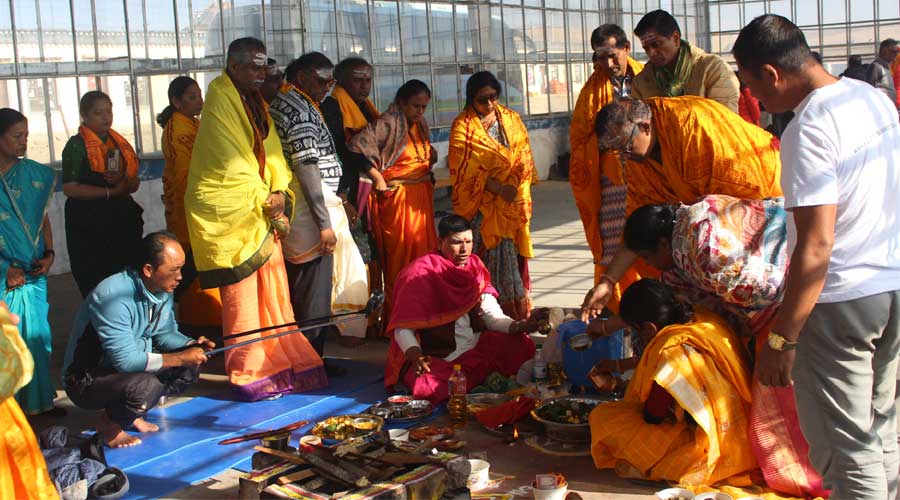
The practices and beliefs of Kailash Mansarovar are like thinking about the homeless seeking meaning and a relationship with life. It is beyond religion; this journey is a chance to seek prayer, meaning, and divinity in the mission.
Historical Background of Kailash Mansarovar
The Kailash Mansarovar is an area steeped in religious and historical lore. According to different religions and cultures, it is mentioned in all sacred literature and has been a Sacred land for several millennia. A similar account of Hinduism has Mount Kailash as the dwelling place of Lord Shiva.
It is also highly significant in Buddhism, where the story of the Buddha’s enlightenment is told. Jainism has been assigned a similar importance as a place of purity.
Kailash, according to the Bon tradition of pre-Buddhist religion of Tibet is considered as a sacred mountain. These two beliefs have turned Kailash Mansarovar into one holy and attractive destination for culture and civilization.
This was done even before bathing at Kailash Mansarovar, a long trek through the hills for many from far and near. This great mountain, with its calm lakes and scenery, attracted many who sought religious redemption or comfort.
More recently, Kailash Mansarovar has also seemed to capture the fancy of adventure seekers and anthropologists alike as they arrived to decipher and seek to understand the significance of culture.
The path of visiting Kailash Mansarovar wasn’t just a trail of physical travel, but it was the voyage that redefined the feelings and belief system of the people who travelled towards the spiritual route.
Kailash Mansarovar Yatra Distance
The total Kailash Mansarovar Yatra distance is about 1000 kilometres. The trip consists of a road from Kathmandu to Tibet with scenic roads and off-roads. From there, you will travel to Lake Mansarovar and then proceed to Darchen, the starting point of the Kailash Parikrama.
The Kailash Mansarovar Yatra Parikrama is a 52-km walk around Mount Kailash that usually takes three days. The distance between Darchen and the Parikrama endpoint and back and the distance between other sites make it challenging yet spiritually fulfilling.
Landmarks during the Kailash Mansarovar Yatra
Kailash Mansarovar is an extra special pilgrimage that involves more than travelling through beautiful landscapes. It holds deep spiritual meaning for those who choose it.
On the way, the pilgrims see many important cultural and religious landmarks, which stand as milestones and remind them of the region’s rich history and traditions.
It is a life-changing experience connecting them to something greater than themselves. Some of the important Landmarks during the Yatra of Kailash Mansarovar are as follows:
Yam Dwar:
The Kailash Mansarovar Yatra begins the moment the pilgrims start their journey through Yam Dwar, considered to be the Gate of the God of Death. Doing this lets them have an indication of crossing from the profane journey to the holy one – from the worldly occupation to the divine one.
Tarboche Flagpole:
Farther along the trail, in the same area, people come to Tarboche if it happens to be with the famous annual happening. To the beat of chants, pilgrims and local residents change a giant flagpole to restore the container of spirituality and the cycle of life.
Dirapuk Monastery:
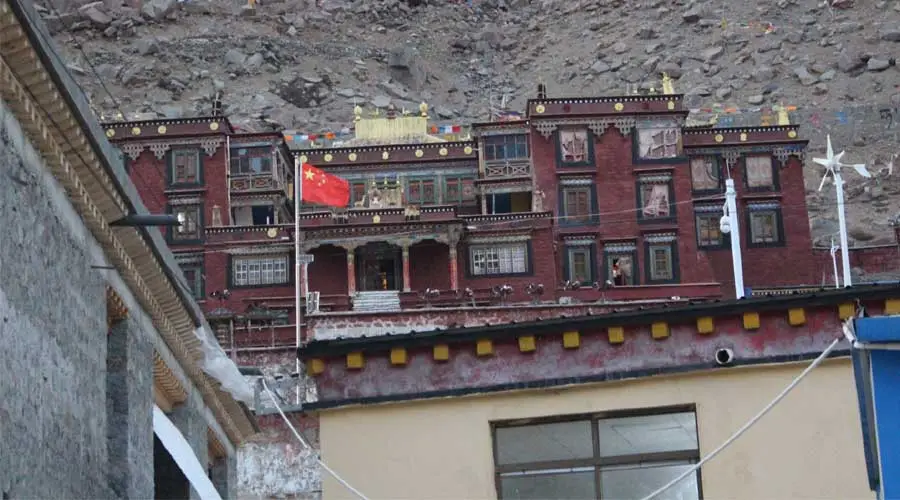
It is the Dirapuk Gompa that warrants prime attraction during the Yatra. This place is utilized by the pilgrims and the locals frequently as they offer prayers and kirtan and can be easily infused with beautiful mountaintop views.
Dolma La Pass:
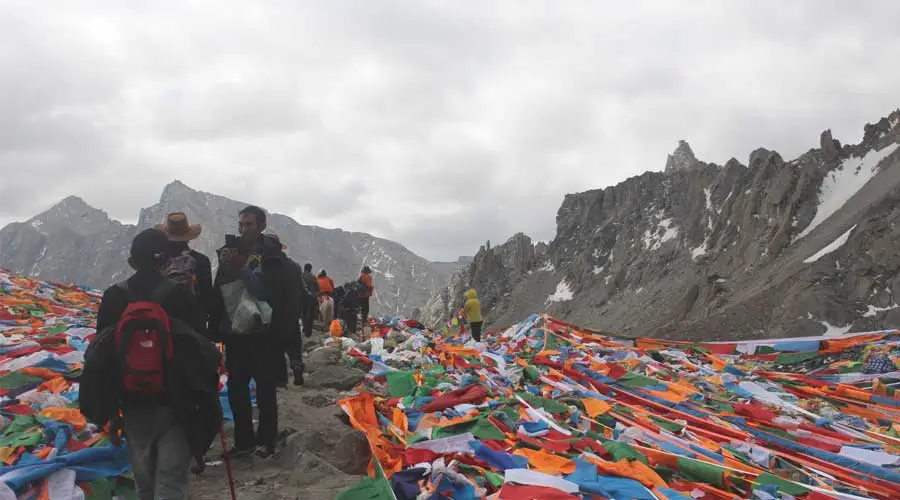
Dolma La Pass is a challenging yet sacred pass at an altitude of 5,650 meters. Pilgrims cross this high mountain pass, and they consider the goddess Dolma the guardian deity of the trek. They pray to her for a safe and trouble-free journey to complete the round.
Gauri Kunda:
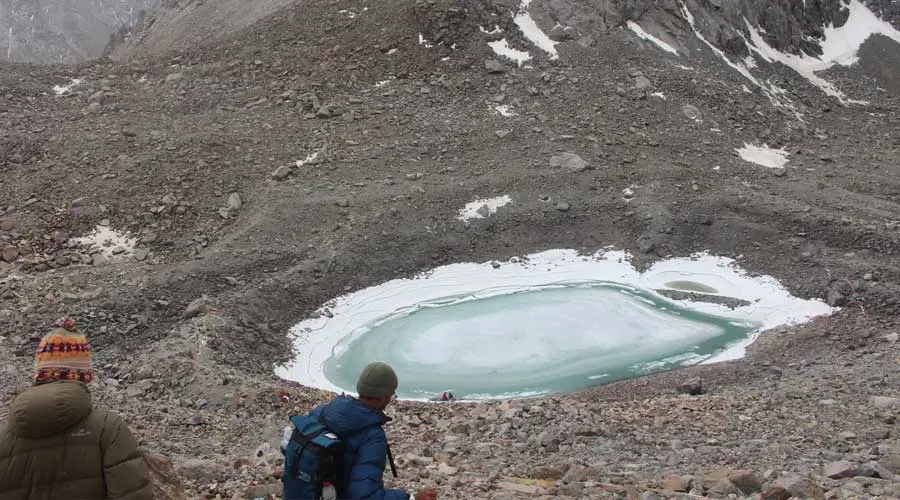
Gauri Kunda is a sanctified water body that comes on the Yatra track, and it is regarded that the goddess Parvati, aka Gauri, used to bathe there. This quiet lake is experienced as a purifying moment by pilgrims, who cannot separate themselves from this lake.
Mansarovar Lake:
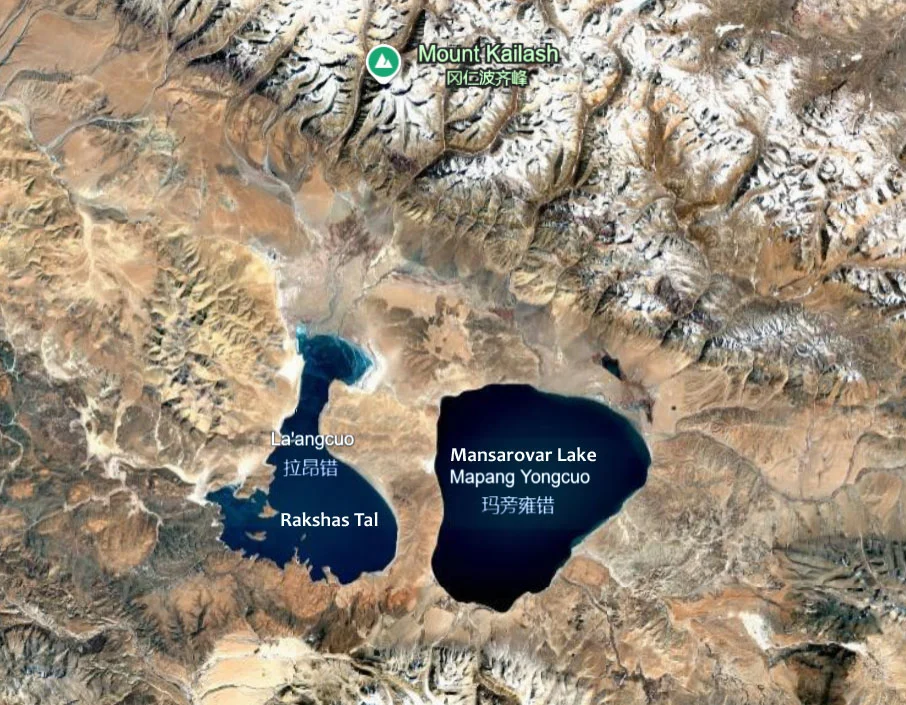
Mansarovar Lake is at the base of Mount Kailash and is also a centre and shrine. The banks of this clean-water lake are filled with believers who bathe, offer offerings, and pray. They consider this segment very significant in their cleansing process.
Rakshas Tal:
While Mansarovar is regarded as positive, according to Hindu mythology, Lake Rakshastal is associated with negativity. Here, pilgrims admit the spirituality of this lake and try to keep a distance from it, showing that positive and negative energies coexist in the journey of life.
Zutul Puk Monastery:
Zutul Puk Monastery marks the conclusion of the Kailash Mansarovar Yatra. Pilgrims find solace and spiritual fulfilment in the serene ambience of the monastery.
Best Time For Kailash Pilgrimage Yatra
The best time for Kailash Yatra is from May to September. These months have good weather, making it easy to move from one place to another.
It is hot during the day and a little cold during the evening. There is little rain, and the climate is sunny most of the time. This is crucial for the establishment of easy and wonderful-looking routes in mountainous regions.
Cultural activities such as the pilgrimage to Saga Dawa in May or June give the trip religious importance. Autumn (October to April) is not ideal, especially for winter, because there is too much snow and cold weather.
It is important to always check the weather forecast and get advice from those in the know before going out.
Also, explore the do’s and don’ts of Kailash Mansarovar Yatra.
Kailash Mansarovar Yatra Group Size
The group size limit during the Kailash Mansarovar Yatra plays a huge role. There should be at least 4 people in the group for the Kailash Mansarovar Yatra.
A usual group of 15 to 30 people is the choice of most travel companies. A middle-sized team maintains order, security and personal hygiene on a manageable level.
We have 20 years and more of experience and have discovered that smaller groups can be better engaged in communication and attended to. All pilgrims will be given the right directions, particularly those on high altitude like Dolma La Pass.
Travel within a group helps in bringing people together and spiritual connection. Exchange of prayers, emotions and times of deviation will add value to the experience of everyone.
In previous cases repeated by a few visitors, who would like to have a private or customized trip, Himalayan Trekking and Tours organizes customized private tours to families, friends, or even small religious groups.
Horse Year Significance in Kailash in 2026
The Tibetan and Chinese calendar indicates that the Horse Year 2026. The current year is regarded as one of the sacred years to visit the Mount Kailash.
Mount Kailash is already perceived as the spiritual universe center of Tibetan Buddhism, Bon, Hinduism, and Jainism. Its spiritual power is held to multiply greatly in the Horse Year.
When the Horse Year comes every 12 years, pilgrims come to Kailash to complete the Kora -holy circumambulation of the mountain.
One is believed to accomplish more merits by accomplishing a Kora in Horse Year 2026 than by accomplishing many thousands of Koras. This is a rare spiritual chance to devotees.
The Horse Year is based on the ancient Tibetan astrology. The horse is a symbol of spiritual advancement, speed and energy.
Freedom and power to conquer challenges are associated with it. Kailash is visited during this period to purify the negative karma and earn blessings of many lifetimes.
The pilgrims will come in their masses in 2026 at the remote area in high altitude located in the western region of Tibet. The pilgrimage includes walking over Dolma La Pass and carrying out rituals in religious places such as Lake Manasarovar.
The Horse Year pilgrimage is a cultural, as well as a spiritual pilgrimage. It unites the Tibetan, Hindu, Buddhist, Jain, and Bon followers.
It is believed that the blessings people enjoy this year are greater than the one they have ever experienced.
Kailash Yatra New Route 2025-2026 via Zhamgmu Update
The Rasuwagadhi-Kerung border is the most used route Kailash Yatra has always been conducted by. However, the road was shut down due to floods in 2025 which damaged key infrastructures.
To this, Zhangmu route through Kodari has been reopened to provide a new entry point of pilgrims between Nepal and Tibet.
Nyalam County in Tibet had Zhangmu Port was shut down during the earthquake in 2015 but is now running fully operational. This reopening has provided the devotees with a secure and convenient route of overland to Mount Kailash.
The journey using this route will go through border crossing at Kodari-Zhangmu, through Nyalam, Darchen and the sacred lake Manasarovar.
Kailash Mansarovar Yatra Cost 2026
We provide an all-inclusive package for Kailash Mansarovar Yatra, which costs $2,950 per person for a group of 4 to 8. This package covers all major expenses, including travel, accommodation, meals, permits, and guides, ensuring a hassle-free experience.
The Kailash Mansarovar Yatra package cost includes transportation from Kathmandu to Tibet and back and local transfers to Mount Kailash and Lake Mansarovar. You will stay in pleasant guesthouses and camps. You will also have local food, enough to last the whole trip.
Our experienced guides will be with you every step of the way, ensuring your safety and providing spiritual guidance. The fee also includes necessary permits and medical backup for the trip.
Kailash Yatra package provides a complete and seamless experience, making your spiritual journey to Kailash Mansarovar both affordable and memorable.
Kailash Mansarovar Yatra Permits
As the Kailash yatra goes through Tibet which is controlled by Chinese rule, it is required to obtain the right Kailash Mansarovar Yatra Permits.
The Kailash Yatra Permits guarantee legal entry, easy traveling, and accessibility to holy places along the path.
All pilgrims are required to possess a valid passport that has not expired by the time they travel. As well, tourists require a Chinese visa which tends to be organized by the authorized tour operators specializing in Kailash tours.
Sightseeing without the company of a group or operator is not usually allowed.
The necessary Kailash Mansarovar Yatra Permit involves:
- Tibet Travel Permit (TTP): This is necessary to get access to Tibet and certain areas like Kailash and Manasarovar.
- Military Travel Permit: Necessary since you will travel around the border of China, for security clearance.
- Alien Travel Permit: This is at times needed in restricted places beyond Darchen.
- Chinese Group Visa: Pilgrims who come in groups are given special group permits by the Chinese authorities.
- Travel Insurance: Although it is not a permit, this is highly advisable as it is in high-altitude and remote places.
These are normally aided by authorized operators in all paperwork that includes the submission of passports, visa applications, and special permits. It is also recommended that photocopies of all documents should be carried in case of any emergency.
Tips for Future Kailash Mansarovar Yatra 2026
Here are a few points giving tips for future pilgrims who plan the Kailash Mansarovar Yatra:
1. Obtain the necessary Permits and Documentation
2. Physical and Mental Preparation
3. Pack Wisely
4. Acclimatization and Altitude
5. Weather-Appropriate Clothing
6. Respect Local Customs and Traditions
7. Stay Hydrated and Maintain Nutrition
8. Connect with Fellow Pilgrims
9. Responsible Tourism Practices
10. Seek Guidance from Experienced Guides
Kailash Mansarovar Yatra Departure Dates for 2026 with Full Moon
| Arrival Date | Tour Start Date | Tour Finish Date | Remarks |
| 21 May 2026 | 26 May 2026 | 31 May 2026 | Full Moon |
| 20 June 2026 | 24 June 2026 | 29 June 2026 | Full Moon |
| 20 July 2026 | 24 July 2026 | 29 July 2026 | Full Moon |
| 18 August 2026 | 23 August 2026 | 28 August 2026 | Full Moon |
| 16 September 2026 | 21 September 2026 | 26 September 2026 | Full Moon |
The above dates are only for the full Moon experience from Dirapuk. If the date mentioned does not suit your leave and travel plans, you can travel to other dates in the above months.
Please remember that you must arrive in Kathmandu on Monday or Tuesday Morning to apply for a Chinese group visa. The visa processing takes four working days (Monday through Friday).
Short Itinerary
Itinerary of Kailash Mansarovar Yatra
Arrive in Kathmandu and check in at your hotel. You will meet with the tour group and guide. The day is free for rest and preparation. Explore local sights in the evening if time permits.
- Hotel in Kathmandu
This morning, we will visit Nepal’s cultural heritage places, such as Pashupatinath Temple (One of the holiest Shiva temples on earth). Here, you see many Shiva temples and meet many Hindu Sages). Other places, such as Swoyambhu Nath and Bouddha, are also beautiful.
Then, we will proceed to the Chinese Embassy to apply for a visa with your required documents. We will spend the night at the hotel.
- Hotel in Kathmandu
- Breakfast, Lunch and Dinner
In the morning, we will head to Rasuwa Gadhi by car (the newly opened border between Nepal and China). It is a mountain drive passing through paddy fields, several villages and a river.
After Immigration and customs formalities on both sides (Nepal & China), drive to Kerung, a small town in China. Finally, we reach the destination; we will acclimatise and roam around Kerung village. Then, stay overnight at a guest house in Kerung.
- Guest House in Kerung
- Breakfast, Lunch and Dinner
After breakfast, our journey from Kerung to Dongba starts. En route enjoy panorama of Mount Shishapangma (8021 meter) and other high Himalayan mountains.
You pass through Pelkhu to Lake (4600 meters), a cobalt blue lake, and later cross the Brahmaputra River to reach Saga. From Saga, a further 100 km of drive is to Dongba.
- Guest House in Dongba
- Breakfast, Lunch and Dinner
It’s a fantastic drive through the unique Tibetan countryside that always makes everybody joyful. En route, you cross Mayum La Pass (5200m). This is the first day to see Mount Kailash and Mansarovar. Reaching Mansarovar, you can have a holy bath in the lake.
Your transport takes you around the lake. The night halt will be at Chu Gompa’s guest house, which is on the shore of Mansarovar Lake.
- Guest House of Chu Gompa
- Breakfast, Lunch and Dinner
Today you commence your journey to Darchen, base camp of Mount Kailash, after lunch. Till that time you can do Puja (Worship), Havana, Meditation and also go for short Hiking to Chu Gompa (Ancient Buddhist Monastery nearby Mansarovar Lake).
After reach to Darchen your guide will assist you if you need horse and porters for your following 3 days trekking around Mt.Kailash.
- Guest House in Darchen
- Breakfast, Lunch and Dinner
Today, we will drive to Shersung. The starting point of trekking is from Shersung. From here, after a short walk, you reach Tarboche. Here is small temple called Yamdwar by Hindus. Near this temple, you see a great flagpole.
It is said that here, Buddha came with 500 disciples for their supernatural power. You continue walk passing through grassy plain populated by nomads. En route you can view of west face of Mount Kailash. Then you reach Dirapuk, from where you will have a good view of the north face of Mount Kailash.
- Guest House of Dirapuk
- Breakfast, Lunch and Dinner
The walk for today is a little bit harder because it goes up to Dolmala passes (5723 meters/18776 feet). It is the highest point in this trip and then way down. From this trail, you can view the mountain’s backside and many prayer flags at the highest point.
In Zuthulpuk, a temple and shrine is built around Milarepa’s cave where Milarepa, one of the most widely known Tibetan Saints, took dark retreat few years. He printed his hand and feet on the rock.
- Guest House of Zuthulpuk
- Breakfast, Lunch and Dinner
Today, the trek is a short and easy walking day. You walk through a grassy plain area along the river. The trekking end point is 4 km before Darchen.
Finish the last stage of the Parikrama to Darchen. The walk of today day is much easier, however, still requires endurance. Upon arrival in Darchen, relax and rest after the exhausting trek.
Once you reach there, your vehicle will pick you up, and then you will be driven back to Dongba on the same road.
- Guest House of Dongba
- Breakfast, Lunch and Dinner
Driving is through the same incoming road. Overnight at a guest house in Kerung. And again from there we will go to a hotel in Kathmandu.
- Guest House in Kerung
- Breakfast, Lunch and Dinner
Drive through the same road. On reaching the Nepal-Tibet border, the route has breathtaking scenery of the mountains.
Once in Kathmandu, check-in at your hotel and relax. Enjoy your final evening in Nepal.
- Hotel in Kathmandu
- Breakfast, Lunch and Dinner
Our tour leader transfer you to the Kathmandu International Airport in time for your flight and help you get on board for your onward destinations
Price includes
- Airport to hotel return transfers in Kathmandu
- 05 night stay in a 3 star equivalent hotel in Kathmandu on sharing basis,
- Breakfast and Dinner included in the hotel
- Kathmandu to Kyirong (Kerung) border return transfers by Nepalese non a/c bus,
- 01 night stay in a guest house at Timure /SyabruBesi with local veg meals,
- 03 nights at 2 star hotel at Kyirong on sharing basis with all veg meals,
- 02 nights at 3 star hotel at Saga/Dongba in a hotel with all veg meals,
- 01 night stay in a guesthouse near Lake Mansarovar on sharing basis with veg meals,
- 01 night stay in a hotel at Darchen with all veg meals,
- 01 night stay in a guesthouse at Dirapuk on sharing basis,
- 01 night stay in a guesthouse at Zuthulpukh on sharing basis,
- Light breakfast, packed lunches, light dinners during parikrama days,
- Transport in Tibet side by Luxury air conditioned Tibetan bus,
- Support truck to carry kitchen equipment and other material in Tibet,
- English speaking Tibetan Tour guide cum Officer in Tibet side,
- Nepali tour leader supported by cook, helper and sherpa,
- Basic first aid kit with tour guide,
- Oxygen cylinders during trekking in Tibet for emergency use,
- Necessary group travel permits for visiting restricted areas in Tibet,
- Yaks to carry your luggage during Parikrama
- Normal Tibet single entry group visa to visit Kailash Manasarovar,
- Nepal-China border tax, all Nepalese and Tibetan Govt taxes,
- Duffle bag, sleeping bag for the yatra
- Kailash Mansarovar Yatra completion certificate,
- Free Puja kit with Hawan Samigri,
- All Nepal and Tibet Govt taxes,
Price Excludes
- International flight to and from Nepal
- Nepal Visa Fee ( payable upon arrival – please get multiple visa)
- Travel Insurance & Emergency Evacuation
- Tips & gratitude to guides and porters / Drivers ( expected)
- Personal horse and helper during Kailash Parikrama
- Personal expenses (laundry, phone calls, liquor, etc.)
- Lunch in Kathmandu (Easily available near your hotel)
- Emergency travel by Jeep during Yatra in Tibet
- Any costs that occurred under unavoidable circumstances (flight delay or cancellation, road blockade, illness, etc.)
- Anything not mentioned in the Yatra Cost Includes section
Have any Questions? Check out FAQ'S
Trip Essential Information
Altitude Sickness in Kailash Yatra Tibet
Altitude sickness in Kailash Yatra can happen to you any time you go to a high altitude without proper acclimatization. They include headache, nausea, dizziness, fatigue and shortness of breath. 2500 meters is the standard altitude during this journey. As one goes up, the level of risk also rises.
You will trek at altitudes exceeding 5000m for the Kailash Mansarovar Yatra. This means that to avoid altitude sickness, you have to do things right regarding altitude exposure. Go easy, and remember that it takes time to acclimatize to higher altitude regions.
Drink a lot of water, avoid alcohol, and if you feel tired, take time to relax. If the symptoms become severe, the altitude must be reduced immediately.
You must pay attention to the signs your body is giving and respond accordingly. Report to the guide if you feel any discomfort in your body. Suppose a trekker doesn’t prepare their body adequately. In that case, there are high risks of experiencing altitude sickness and paying attention to your health while on the journey is very important in making the journey safer and more enjoyable.
Food During Kailash Mansarovar Yatra
The food during the Kailash Mansarovar Yatra is plain and unprocessed. Vegetarian meals are generally prepared because the journey is sacred, and many pilgrims avoid meat. The foods include rice, vegetables, lentils, bread, and Tibetan noodles.
While in Tibet, you will eat simple meals bought and arranged by local cooks. The portions are tiny, but they provide enough energy. You can also carry along fruits, nuts, energy bars, and other light foods to replenish your energy during the trek.
This is because people in rural areas should expect to get limited service. If you have any dietary restrictions mention it to your guide prior to the journey to have them prepared in advance.
The increased altitude apparently reduces appetite; however, water intake should be regular, and food should not be eaten heavily. Rest and enjoy, as it is time to step up and challenge the terrain some more.
Toilet and Sanitation Facilities during Kailash Parbat Yatra
Due to the route of the yatra to remote Himalayan regions, toilets and sanitation is provided at a bare minimum and is at manageable levels.
Pilgrims get guesthouses, lodges, and tented camps along the way with squat or mobile toilets.
The facilities cannot be compared to the city ones though in camping spots such as the Darchen, Dirapuk, and Zuthulpuk the facilities are kept clean to keep the hygiene well maintained.
Himalayan Trekking and Tours also put up portable toilets tents particularly when there is scarcity of permanent ones especially during the parikrama.
All the personal hygiene products like wet wipes, toilet papers, hand sanitizer, and soap that is environmentally safe.
Our responsibility is to promote travel by reducing the quantity of litter and waste disposal through designated waste containers. The waste is disposed of properly and the environment healthy during the journey, by our team.
How to perform puja at Kailash Mansarovar?
One of the very holy aspects of the yatra is rituals at Lake Mansarovar. The nature of the lake is turquoise blue with a height of approximately 4,590, which was believed to have been formed by Lord Brahma.
Hindus believe that holy dip will remove the sins and bodies and soul are cleansed.
You can be having Puja and Havan at the lakeside. A lot of pilgrims carry small bottles to get holy water and use it later.
It is important that we observe respectful and friendly practices towards nature at even rituals. Use of soaps, shampoos, or detergents should be avoided.
Do not drop flowers, or coins or other things in the lake. Perform the rituals in a serene and religious manner.
Once you rely on Himalayan Trekking and Tours, you will be given the chance to be guided by experienced members of the team into the appropriate and respectful rituals.
We get Hindu priest (Pandit) to preside over Puja, and chants and the experience is more significant.
Hiring Horses, Yaks, and Porters for Kailash Parikrama
One of the physically challenging and yet most spiritually fulfilling Kailash Mansarovar Yatra is the Mount Kailash Parikrama or Circumambulation.
It spans some 52 kilometres and traverses elevated terrain including the widely renowned Dolma La Pass of 5,650 m.
Pilgrims may also hire horses, yaks, or porters so that the journey becomes easier. These services are at Darchen, the place of beginning of the parikrama.
Horses and yaks carry personal luggage or help trekkers who are simply too tired or find it hard to walk due to altitude. Individual assistance or carrying of bags and equipment can be hired by porters.
Depending on the season and bargaining, the price to hire is typically USD 400 to 600 during the whole parikrama.
Our Himalayan Trekking and Tours team will make sure that you get reasonable costs and credible service providers. We just hire local Tibetans familiar with the route and experienced.
Each time a local helper is hired, he/she offers the people of Tibet safety and comfort and also helps the community. Elderly pilgrims with health issues will find it easier and safer to use such services.
Mansarovar Lake Parikrama
Mansarovar Lake Parikrama is the symbolic worship pilgrims are required to do to pay respect to the sacred lake.
The pilgrims accomplish most of the parikrama by vehicle due to its great size, with only a small number of people walking short spurts due to extreme devotion.
The circuit of Lake Mansarovar typically takes three to four hours, again depending on the journey along the route, and any detentions.
Strategic places where pilgrims stop to have prayers, meditate, and take photos. Mount Kailash reflects on the crystal-clear water of Mansarovar which is the most enthralling view that you will ever see.
The pilgrims also perform pujas and offer prayers at various locations round the lake during the parikrama. Others can also engage in taking a second holy dip or gathering water as it is blessed.
Our crew will take care of all operations, serve meals and places on time, and give all-inclusive instructions to leave all the organization to Intake your spiritual life in nature and Divinity.
Mythological Significance of Kailash Mansarovar Yatra 2026
The Kailash Mansarovar Yatra has a major significance. Below we have listed how important and mythologically Kailash is.
Mythical Tales Woven Around Kailash
The mythology of Kailash Mansarovar is not linked to any singular religious belief. According to Buddhism, the mountain is associated with the Buddha’s enlightenment, and it is believed that one circuit around Kailash could wipe away a lifetime’s sins.
The Jains also consider Kailash a holy place, attributing it to their first Tirthankara, Rishabhadeva.
In addition, the Bon religion, the native religion of Tibet, believes Kailash to be the abode of its founder, Tonpa Shenrab.
Thus, all these different mythologies weave into the spiritual aura around Kailash Mansarovar, transforming it into a beacon of religious harmony and a landmark of the interconnectedness of a few religions.
Mysterious Lake Mansarovar
Like Mount Kailash, Lake Mansarovar is prehistoric and divine. It lies beneath the same mountain. Local Hindus believe that Lord Brahma created the lake for meditation. One can immerse oneself in its holy water to purify oneself.
It is another pilgrimage site for Buddhists and Jains, meaning the town of Mansarovar signifies purity and spiritualism.
Exploring the myth and myths according to the lake adds a more mystical hue to the Kailash Mansarovar yatra since the pilgrims take up a journey not to gods and their dwelling place only but towards the edge of an abode of water said to have a liquid that can imprison immortality.
The magic obtained by equating myth and reality draws tourists from all over the globe to witness the sacred power permeating Kailash Mansarovar.
Variety of Flora and Fauna in Mansarovar Yatra
Notwithstanding these extreme conditions, the area around Kailash Mansarovar is home to various flora and fauna. The pilgrims can observe wild animals such as blue sheep, marmots, and several species of birds.
The highlights of Kailash Mansarovar together weave a pilgrimage that transcends beyond the physical journey to a profound and life-changing experience for the individuals who trust themselves in this holy experience.
Physical and Mental Preparation for the Pilgrimage: Kailash Mansarovar Yatra
These are some of the physical and mental preparation for the Kailash Mansarovar Pilgrimage Yatra:
Physical Fitness:
Kailash Mansarovar Yatra is a high-altitude pilgrimage trek where the pilgrims must have to endure a lot of strain during the journey. For such a rigorous exercise, the pilgrims should be healthy.
People would be able to work out and build up their stamina through aerobic and strength-building exercises to build their bodies for high-altitude activities. Pilgrims should start preparing themselves through exercising for a week before getting into the holy week.
Altitude Acclimatization:
Regarding the altitudes one has to overcome during the Kailash Mansarovar Yatra, the main problem remains altitude sickness. For this reason, the pilgrims have to mitigate their exposure to the height gently. This may require one to spend a whole or two or so at the middle altitude before proceeding to the high altitude.
One needs to pay attention to his/her body, drink water, and seek a doctor’s advice regarding altitude-related issues, if any.
Mental Preparation:
It can be an agenda of the physical pilgrimage from one place to another, spiritual and mental. Climbers are faced with hard trails, inclement climate and hours of touring. There are a lot of things that have to be kept positive and the stress is sustained mental preparedness and motivation to go on.
Medical Check-ups and Vaccinations:
Ideally, through community consultation, know that before choosing to go on pilgrimage, if we go to the natural environment without coming across other people, at least they should be subjected to a medical examination to prove their fitness or otherwise before they undertake the journey.
Moreover, it will also be appropriate for pilgrims to consult health officers to advice them on vaccination and any medication that might be needed in the region. Measures will be taken against diseases that may hinder the journey for pilgrimage.
Packing Essentials:
One of the major physical procedures that need to be followed includes packing for Kailash Yatra appropriately. Accordingly, the pilgrims should pack appropriately for any kind of weather change: umbrellas and overcoats, as well as scarves and gloves for winter-like weather.
This is useful on the trekking portions of the trip; good supportive shoes are good to have. Carry along some simple primary treatments, prescribed medications in case of health complications, and crumbs of cleanliness for an enjoyable journey to the shrine.
Cultural Sensitivity Training:
Local people interaction as well as diversifying cultures attention is also included in the Kailash Mansarovar Yatra. Thus, pilgrims should be taught to appreciate and understand the cultural practices of regions they wish to visit during these reforms.
This will not only enhance the amount of fun and excitement being offered and endured by the people but also help in maintaining a healthy, sustainable interaction with the residents.
Team Building and Group Dynamics:
Most pilgrims preferred to start the Kailash Mansarovar Yatra in batches. Company and familiarity should be arranged in a group to make it comfortable in the journey.
Yatra participants have to meet before the Yatra or pre-Yatra meeting/training to socialise and get to know each other to understand the group dynamics and express feelings and ideas for group support during the pilgrimage.
Cultural Experience: Interaction with Local Communities
The Kailash Mansarovar Yatra is not just a tour but an experience that exposes one to the rich culture of the local communities. While trekking across different landscapes, one meets the indigenous people of the area to acquaint oneself with their traditions and customs.
It is not only a matter of seeing and understanding; rather, the pilgrims participate in local rejoicing and rituals. This adds authenticity to the pilgrimage and infuses it with meaning. The interaction is not unidirectional but bidirectional since the pilgrims also share their own traditions and rituals, mixing experiences.
A unique part of connecting with the locals is observing their traditional art and craftsmanship passed down through the ages. Be it elaborately woven textiles, colourful paintings, or traditional music, these cultural expressions help you connect with the region’s heritage. In fact, pilgrims can even try their hands at these crafts with assistance from the local artisans.
These conversations with the locals also bring out the spiritual depth of the quotidian. The pilgrims realise with poignancy how the sacred is intertwined with the every day, for the journey to Kailash Mansarovar is also a spiritual exchange with the communities which have made this region their home for centuries.
In short, the cultural experience of interaction with the local communities along the Kailash Mansarovar Yatra forms a significant part of the journey. The journey does not merely remain a physical one; it becomes an all-rounded expedition of shared humanity, helping one and all appreciate the various cultures that thrive in the shadow of this holy mountain.
Difficulties and Adventures of Kailash Mansarovar Yatra
Altitude Challenges and Acclimatization:
Being at such a high altitude is one of the difficult tasks that pilgrims encounter during the Kailash Mansarovar Yatra. The drive subjects them to altitude, which may rise up to more than 5000 meters above sea level.
This is because the pilgrims spend a day or more in given places to treat themselves to the low oxygen levels. At Himalayan Trekking, we can assure you of the fact that we always incorporate the acclimatization days, and that is primarily because of safety concerns.
Since the Yatra is a fitness check, the participants need to take care of their health, drink plenty of water and never ignore signs of Acute Mountain Sickness.
Weather Conditions and Impact:
The situation is compounded by the fact that Kailash Mansarovar is a region with variable and rather stormy weather at any time of the year. While the pilgrims are travelling, they can witness a relatively short change from fine weather to snow showers.
Usually, Yatra is performed in the summer, still, at this time of the year, the heat might be rather different. Of course, appropriate garments and equipment arise when such types of conditions of the trail are necessary. The pilgrims face good weather and sometimes rain and snow on their trips, and therefore, the trip is not only a rigorous one but also a cheerful one.
Typical Day During Kailash Mansarovar Yatra
The Kailash Mansarovar Yatra starts early. You wake up to the fresh mountain air and enjoy a light breakfast. Subsequently, you begin your way, either by car to the next place or on foot to the next one.
The drive provides spectacular views of the Tibetan terrain, and the trek is strenuous on the body but sublime from a spiritual perspective. At regular intervals, you take short rest stops to refresh and rehydrate. You’ll have lunch in small villages or at rest stops with simple, vegetarian meals.
Every night, you arrive at the tiny teahouses, tents, and accommodation. Having settled in, you take it easy and eat something hot. Pilgrims commonly come together to pray, meditate or briefly discuss the pilgrimage. Each day is filled with natural beauty, spiritual connection, and physical challenges. The pace is constant, so there is an opportunity to acclimate and contemplate.
Kailash Mansarovar Yatra Insurance
Travel insurance is very much a necessity for the Kailash Mansarovar Yatra. It covers unforeseeable phenomena, like the interruption of a trip, a medical emergency or an accident in the middle of a trip.
Due to the nature of the Yatra, a high-altitude trek, it is essential to maintain coverage for altitude sickness, evacuations, and any medical problems. Please ensure that your insurance covers the trip’s total duration from the arrival in Nepal and the Tibet trip back home.
Insurance policies sometimes cover lost baggage or delayed flights. However, policy details must constantly be reviewed and adapted to the particular requirements of the Kailash Mansarovar Yatra.
Drinking Water
Water is not always dispensed during the Kailash Mansarovar Yatra; therefore, it should be brought along. Basic drinking water facilities are available in certain areas, but it’s recommended to carry bottled or filtered water to stay hydrated. A dry climate and high altitude may cause dehydration, so water intake should be adequate.
It is also advisable to carry water purification tablets or a portable filter as an extra precaution, as the water quality may be variable. Drinking bottled, treated water is recommended to prevent stomach problems and to guarantee safe and comfortable travel.
Accommodation on Kailash Mansarovar Yatra
Accommodation during the Kailash Mansarovar Yatra is simple and basic but comfortable. You’ll stay in guesthouses, monasteries, or even tents while on the road.
In Tibet, expect basic rooms with essential facilities like beds, blankets, and a shared bathroom. In some cases, the heat in guesthouses could be scant, so warming clothes are advisable for the night. However, in more isolated environments (for example, during the Parikrama circuit of Mount Kailash), you will lodge in tents or temporary huts.
These accommodations provide basic shelter and meals, allowing you to rest and recharge. Though facilities are small, the emphasis is on a safe and spiritual atmosphere for the process. The experience focuses on interacting with the environment and with the other pilgrims. Expect to rest, reflect, and prepare for the next day’s trek in peaceful, serene locations.
WiFi, Internet, Communication
In the Kailash Mansarovar Yatra, internet and WiFi access is very meagre. In significant towns like Tibet’s Lhasa and Nepal’s Kathmandu, you may find some connectivity, but as you move deeper into the journey, especially at high altitudes, internet access becomes scarce.
Mobile reception is also patchy, with improved coverage in areas of higher population density and none in areas at greater altitudes. Considering this lack of communication, it is worthwhile to be prepared. In certain regions, satellite phones are available for emergencies but are generally restricted to situations requiring immediate attention. It’s a good thing to tell family and friends you may be out of touch for a long time in advance.
Embrace the experience of disconnecting from technology. This will enable you to get completely immersed in the experience, deepen your own spiritual development, and appreciate the peaceful scenery.
Oxygen Cylinder for Kailash Mansarovar Yatra
Himalayan Trekking and Tours will provide oxygen cylinders in an emergency. Although an oxygen cylinder is usually not required, some pilgrims prefer to carry their own handy cylinders. You can buy a small portable cylinder in Tibet for approximately Yuan 20-30 per cylinder.
Age Restrictions for Kailash Yatra
Physical and Mental Fitness are essential while planning this tour, as you will climb 5660 meters. If you are fit, you may travel, but sometimes, Chinese Authorities do not permit people aged 70 or above. We insist everyone consult with their doctor and mention that they are going to a high altitude. Many old people have travelled with us and completed the Parikrama.
Clothing for Mansarovar Parikrama
All Pilgrims should wear Casual, comfortable walking shoes. It is recommended that they travel to Tibet. Be sure to bring warm clothing, as nights and early mornings can be chilly. Indian women Pilgrims are strictly advised not to wear Saris.
Bring all the medicines, cosmetics, personal toilet items, etc., that you need at home, as these are difficult (if not impossible) to obtain on the way. A small first aid kit is also a good idea. Also, having a route map to know where you are going and where you have been each day is pretty helpful.
Winter wear: Gore-Tex material, though expensive, is highly recommended to beat the chilling cold. Also, carry a down jacket, raincoat or windbreaker, thermal underwear, Jackets, warm trousers & woollen shirts (cotton will also do), warm sweaters, woollen gloves, sun hat, sunglass, comfortable shoes, light leather boots in case of snow, woollen balaclava (‘monkey cap’) & scarf/dust mask to protect your eyes & nose from dust and cold.
Also learn how to reach Kailash Yatra from Nepal.
Currency Exchange
The unit of Chinese currency is Yuan. USD 1 = 6.00 Yuan. 1 Yuan = INR 10.00 approx. Money can be exchanged at the Bank of China at Zhangmu or from the locals at Zhangmu or Kodari. Exchange all your remaining Yuan at the end of the trip to Zhangmu before re-entering Nepal.
Videos
Frequently Asked Questions (FAQ)
Kailash Mansarovar is a sacred site in the Himalayas, featuring Mount Kailash and Mansarovar Lake. It holds deep religious significance in Hinduism, Buddhism, Jainism, and the Bon tradition.
Pilgrims undertake the Kailash Mansarovar Yatra for spiritual reasons, seeking blessings, purification, and a deeper connection with the divine. The journey is a blend of physical challenges and spiritual fulfillment.
Kailash Mansarovar is culturally significant across various religions, with Mount Kailash associated with Lord Shiva in Hinduism and considered a sacred mountain in Buddhism, Jainism, and the Bon tradition.
Pilgrims face challenges such as high altitudes, unpredictable weather, difficult terrain, and cultural and language barriers. Overcoming these challenges adds to the transformative nature of the pilgrimage.
Preparation involves physical fitness, altitude acclimatization, obtaining necessary permits, health documentation, and cultural sensitivity training. Pilgrims should also be equipped with suitable clothing and gear.
Notable landmarks include Yam Dwar, Dolma La Pass, Gauri Kund, Mansarovar Lake, Rakshas Tal, and Zuthulphuk Monastery. Each holds cultural and religious significance for pilgrims.
Pilgrims need permits like the Inner Line Permit (ILP) and Restricted Area Permit (RAP). You must have a valid passport, Chinese visa, medical certificate, and comprehensive travel insurance.
Pilgrims engage in cultural exchange, participating in local celebrations and rituals, and even trying their hand at traditional crafts. These interactions create a sense of togetherness and shared spiritual values.
Yes, you can undertake the Kailash Mansarovar Yatra from Nepal. The journey typically starts from the capital city, Kathmandu.
Yes, it’s tough to make the journey to Kailash Mansarovar. But even though it’s challenging, many people still go because it’s a really important spiritual experience. The difficulties along the way are actually a big part of the pilgrimage and can make it feel even more special. It’s really important to be ready, both physically and mentally, if you want to have a successful and meaningful trip to Kailash Mansarovar.
Beginning on the Kailash Mansarovar Yatra involves some risks that pilgrims should be ready for. The high altitude can cause altitude sickness, so it is important to acclimate and watch for symptoms like headaches and nausea.
The weather can be unpredictable, with snowstorms and varying temperatures, so it is important to have the right clothes and gear. The terrain is tough, with rocky paths and high mountain passes, so you will need to be physically strong. There may be language and cultural differences with local communities, so it’s important to be respectful and sensitive.
Getting permits and finding accommodations can also be complicated. In remote areas, facilities are limited, adding to the challenges. Pilgrims should be physically and mentally prepared, follow safety guidelines, and work with reliable tour operators to make sure they have a safe and meaningful pilgrimage.
Yes, when pilgrims go on the special journey to Kailash Mansarovar, many of them take part in a very important tradition: bathing in the clear waters of Mansarovar Lake. This ritual is very meaningful, especially in Hinduism, where the lake is seen as sacred and believed to have special cleansing powers.
By immersing themselves in the holy waters of Mansarovar, pilgrims believe they are purifying their souls and washing away their sins. It’s a very powerful and transformative experience for those on the pilgrimage.
Even though the lake’s waters are extremely cold and the weather is tough, pilgrims willingly take part in this ritual as a way to show their devotion and seek spiritual enlightenment. It’s a deeply symbolic and culturally important part of the Kailash Mansarovar Yatra, connecting pilgrims to the sacredness of the site and the spiritual traditions of the journey.
Essential items include warm clothing, trekking shoes, a hat, sunglasses, sunscreen, a water bottle, and a basic first-aid kit. Don’t forget your travel papers, camera, etc., and keep some small personal things for the trip. Correct equipment is fundamental to a safe and pleasurable Yatra.
Yes, you can. Parikrama is a 52-km circumambulation of Mount Kailash, which normally requires 3 days. Pilgrims walk the circuit for spiritual purification. The trek is arduous because of altitude and terrain, but it is considered a sacred component of the Yatra.
Mount Kailash is located at 6,638 m (21,778 ft) above sea level. Lake Mansarovar is at 4,590 m (15,060 ft) altitude. The high altitude can cause altitude sickness, so proper acclimatization is necessary.
Pilgrims should also have good physical condition, especially in cardiovascular and respiratory condition. Please see a physician prior to travel for people with cardiac or pulmonary disease.
Generally, the cost of the Yatra is in the range of USD 2,500 to 3,000 based on the package. This includes travel, accommodation, meals, permits, and guide services. That the package will contain all necessary arrangements for a trouble-free trip.
The Yatra typically takes around 12-14 days. The itinerary covers travel from Kathmandu to Tibet, access to Lake Mansarovar, Parikrama around Mount Kailash, and acclimatization period.
The Kailash Mansarovar Yatra is a term that describes the trek to a sacred site (Lord Shiva’s abode) situated on the Tibetan plateau. The Yatra involves high-altitude trekking, making it moderately challenging.
The Mount Kailash (Parikrama) trek is arduous because of its altitude, more than 5,000 m. Proper acclimatization, fitness, and preparation are essential.
You can reach Kailash Mansarovar via Kathmandu, Nepal. Thereafter, one travels by land or jeep to Tibet to Lake Mansarovar and Mount Kailash. Numerous tour operators provide guided tours, including all arrangements.
© 2025 - Himalayan Trekking and Tours (P) Ltd. All Rights Reserved.


